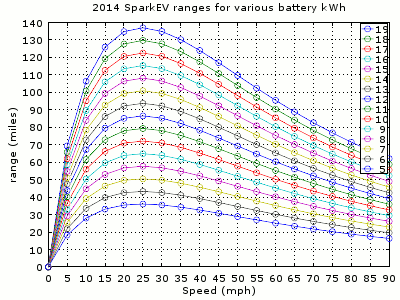I've had my 2014 Spark for now a year and 8 months. The car now has 23k on the odometer but my battery life has suffered greatly. I began with 80-100 miles of range (depending on my driving style and weather), but now I'm getting 60-75 miles.
I've used the built in battery usage meter, and today, I had 8.8 KW used at 50% battery life. This indicates I have somewhere around 17.6 KW total battery life. That is a nearly 16% battery life lost. Does anyone else have this type of battery deterioration? Anyone know what Chevy's battery life warranty is, or when they will do something about excessive battery life loss? If I hit the 20% mark, I won't be able to make my daily round trip.
I've used the built in battery usage meter, and today, I had 8.8 KW used at 50% battery life. This indicates I have somewhere around 17.6 KW total battery life. That is a nearly 16% battery life lost. Does anyone else have this type of battery deterioration? Anyone know what Chevy's battery life warranty is, or when they will do something about excessive battery life loss? If I hit the 20% mark, I won't be able to make my daily round trip.

























